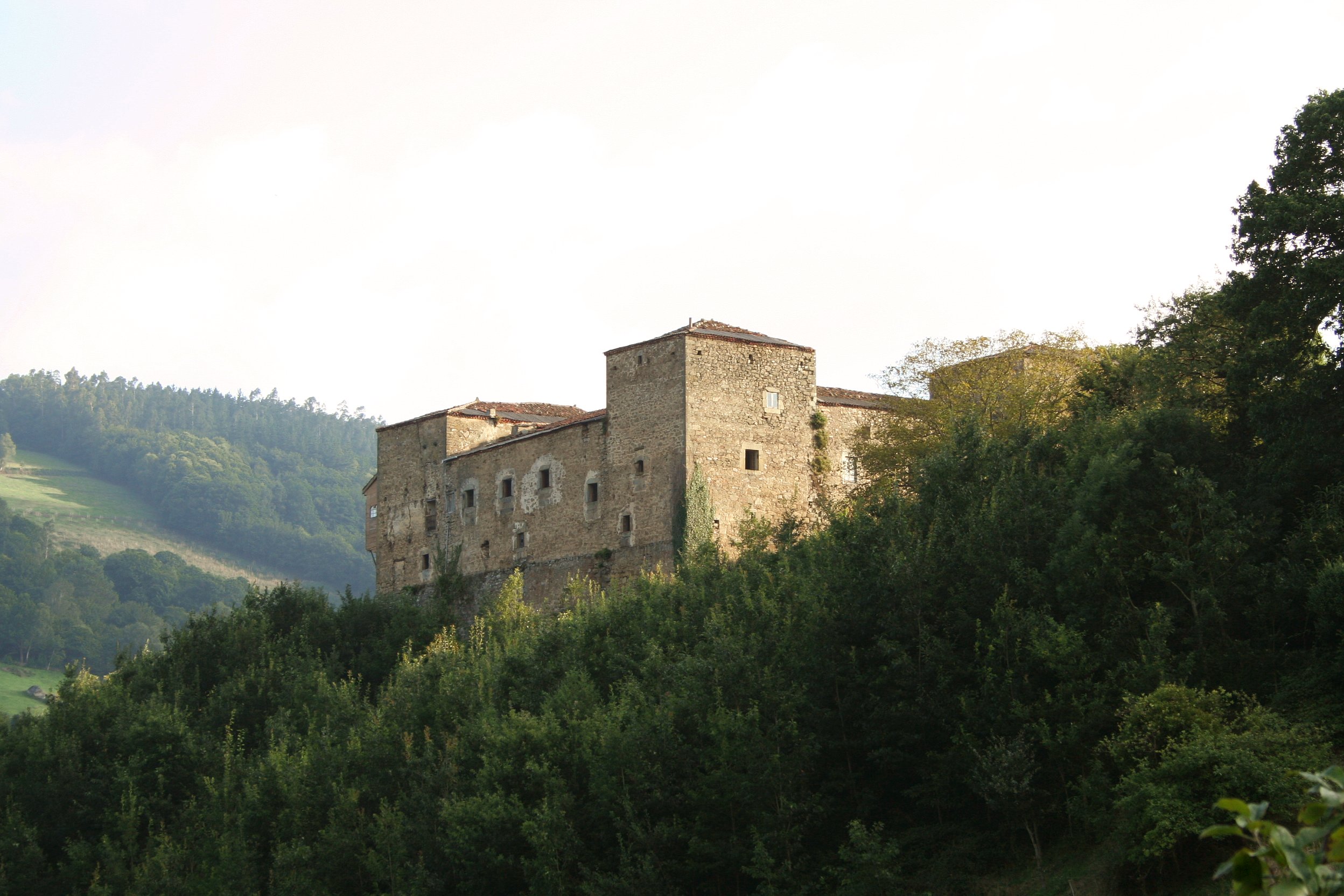|
Pesoz
Pesoz ( Eonavian: Pezós) is a municipality and the only parish in that municipality in the Autonomous Community of the Principality of Asturias, Spain. It is one of the least populated municipalities in Asturias. It is bordered on the north by Illano, on the south by Grandas de Salime, on the east by Allande and on the west by San Martín de Oscos. The municipality consists of only one parish, Pesoz. Geography Pesoz is crossed by two rivers: Agüeira and Navia, joining the first one in the second, close to the Doiras reservoir. Navia river is the limit of the municipality with Illano. Pesoz is located in the confluence of the rivers Agüeira and Aio, and the population is established in the proximities of ''Palacio de Ron''. History It is comprobated Pesoz had population since Neolithic. Also there were mines since Romanization In linguistics, romanization is the conversion of text from a different writing system to the Latin script, Roman (Latin) script, or a system ... [...More Info...] [...Related Items...] OR: [Wikipedia] [Google] [Baidu] |
San Martín De Oscos
San Martín de Oscos ( Eonavian: Samartín d'Ozcos) is a municipality in the Autonomous Community of the Principality of Asturias. It is bordered on the north by Illano, on the south by Grandas de Salime, on the east by Pesoz and on the west by Santa Eulalia de Oscos and Villanueva de Oscos. History The first known human presence in the territory of San Martín goes back to the Neolithic period, as witnessed by tumulus remains found in Os Pedrousos (Teixera). There are also remains of ancient mine workings at Arruñada, Piorno, Covas del Resalao, and in the Sotuelo and Ahío valleys. There are remains of ancient fortified settlements at San Isidro and Pico de la Mina, near to Bousoño, both situated in elevated positions clearly motivated by defensive considerations. The defensive nature is underlined by ditches, walls and stones embedded in the surrounding ground to hinder approach. A gold diadem thought to originate from this culture was found in Valderreixe. The existe ... [...More Info...] [...Related Items...] OR: [Wikipedia] [Google] [Baidu] |
Navia (river)
The Navia is a river in northern Spain flowing South to North from Galicia into the Autonomous Community of Asturias. It discharges into the Bay of Biscay The Bay of Biscay ( ) is a gulf of the northeast Atlantic Ocean located south of the Celtic Sea. It lies along the western coast of France from Point Penmarc'h to the Spanish border, and along the northern coast of Spain, extending westward ... through an estuary called ''Ría de Navia''. See also * List of rivers of Spain * Rivers of Galicia External links Official website Rivers of Spain Rivers of Asturias Rivers of Galicia (Spain) {{Spain-river-stub fr:Navia (bromeliacée) ... [...More Info...] [...Related Items...] OR: [Wikipedia] [Google] [Baidu] |
Allande
Allande ( Asturian and Galician-Asturian: ''Ayande'') is a municipality in the Autonomous Community of the Principality of Asturias, Spain. Its capital is Pola de Allande. The municipality is bordered on the north by Villayón, on the south by Cangas del Narcea and Ibias, to the east by Tineo and to the west by Pesoz, Grandas de Salime and Negueira de Muñiz (in the province of Lugo, Galicia). The majority of the territory of the municipality is a National Monument. Among its forest riches are thousand-year-old yews in the parishes of Santa Colma and Lago, and the cork forest of Boxu. Demography Allande is one of the least populated municipalities in Asturias. Like the rest of the Asturian rural areas, the area is losing population. In the 20th century, there were two major periods of population loss. The first was from 1900 to 1930, where a large number of the inhabitants emigrated to the New World, especially Cuba, Puerto Rico, Argentina, and the Dominican Republic. T ... [...More Info...] [...Related Items...] OR: [Wikipedia] [Google] [Baidu] |
Grandas De Salime
Grandas de Salime is a municipality in the Autonomous Community of the Principality of Asturias, Spain. It is famous for its hydroelectric dam across the Navia River, forming the Embalse de Salime (''reservoir of Salime''). It is also famous for being a stop along the Camino Primitivo path of the Camino de Santiago, where it is the last stretch of Asturian land before the entrance into Galicia through the Acebo Pass. The municipality is situated in the interior of the eastern region of Asturias, bordered on the south by the Galicia (Spain), Galician province of Lugo (province), Lugo, on the north by the Asturian municipalities of Santa Eulalia de Oscos, San Martín de Oscos, Pesoz and Allande. The village has an ethnographic museum which occupies the former governing house of Grandas. Geologically, the region is dominated by deposits of shale and quartzite. The hydroelectric dam turned 50 years old in 2004. Its inside is adorned with a large mural by the architect of the dam, Joa ... [...More Info...] [...Related Items...] OR: [Wikipedia] [Google] [Baidu] |
Municipalities Of Spain
The municipality (, , , , , )In other languages of Spain: *Catalan language, Catalan/Valencian (), grammatical number, sing. . *Galician language, Galician () or (), grammatical number, sing. /. *Basque language, Basque (), grammatical number, sing. . *Asturian language, Asturian (), grammatical number, sing. . is one of the two fundamental territorial divisions in Spain, the other being the Provinces of Spain, provinces. Organisation Although provinces of Spain, provinces are groupings of municipality, municipalities, there is no implied hierarchy or primacy of one over the other. Instead the two entities are defined according to the authority or jurisdiction of each (). Some autonomous communities also group municipalities into entities known as ''comarcas of Spain, comarcas'' (districts) or ''mancomunidades'' (commonwealths). The governing body in most municipalities is called ''Ayuntamiento (Spain), ayuntamiento'' (municipal council or municipal corporation, corpora ... [...More Info...] [...Related Items...] OR: [Wikipedia] [Google] [Baidu] |
Spanish Socialist Workers' Party
The Spanish Socialist Workers' Party ( , PSOE ) is a Social democracy, social democratic Updated as required.The PSOE is described as a social-democratic party by numerous sources: * * * * List of political parties in Spain, political party in Spain. The PSOE has been in government longer than any other political party in modern democratic Spain: from 1982 to 1996 under Felipe González, 2004 to 2011 under José Luis Rodríguez Zapatero, and since 2018 under Pedro Sánchez. The PSOE was founded in 1879, making it the oldest party currently active in Spain. The PSOE played a key role during the Second Spanish Republic, being part of the coalition government from 1931 to 1933 and 1936 to 1939, when the republic was defeated in the Spanish Civil War. The party was then banned under the Francoist Spain, Francoist dictatorship and its members and leaders were persecuted or exiled; the ban was only lifted in 1977 in the Spanish transition to democracy, transition to democracy. His ... [...More Info...] [...Related Items...] OR: [Wikipedia] [Google] [Baidu] |
Romanization
In linguistics, romanization is the conversion of text from a different writing system to the Latin script, Roman (Latin) script, or a system for doing so. Methods of romanization include transliteration, for representing written text, and transcription (linguistics), transcription, for representing the spoken word, and combinations of both. Transcription methods can be subdivided into ''phonemic orthography, phonemic transcription'', which records the phonemes or units of semantic meaning in speech, and more strict ''phonetic transcription'', which records speech sounds with precision. Methods There are many consistent or standardized romanization systems. They can be classified by their characteristics. A particular system's characteristics may make it better-suited for various, sometimes contradictory applications, including document retrieval, linguistic analysis, easy readability, faithful representation of pronunciation. * Source, or donor language – A system may be tai ... [...More Info...] [...Related Items...] OR: [Wikipedia] [Google] [Baidu] |
Neolithic
The Neolithic or New Stone Age (from Ancient Greek, Greek 'new' and 'stone') is an archaeological period, the final division of the Stone Age in Mesopotamia, Asia, Europe and Africa (c. 10,000 BCE to c. 2,000 BCE). It saw the Neolithic Revolution, a wide-ranging set of developments that appear to have arisen independently in several parts of the world. This "Neolithic package" included the History of agriculture, introduction of farming, domestication of animals, and change from a hunter-gatherer lifestyle to one of sedentism, settlement. The term 'Neolithic' was coined by John Lubbock, 1st Baron Avebury, Sir John Lubbock in 1865 as a refinement of the three-age system. The Neolithic began about 12,000 years ago, when farming appeared in the Epipalaeolithic Near East and Mesopotamia, and later in other parts of the world. It lasted in the Near East until the transitional period of the Chalcolithic (Copper Age) from about 6,500 years ago (4500 BCE), marked by the development ... [...More Info...] [...Related Items...] OR: [Wikipedia] [Google] [Baidu] |
Doiras Reservoir
Doiras is one of seven parishes (administrative divisions) in Boal, a municipality within the province and autonomous community of Asturias, in northern Spain Spain, or the Kingdom of Spain, is a country in Southern Europe, Southern and Western Europe with territories in North Africa. Featuring the Punta de Tarifa, southernmost point of continental Europe, it is the largest country in Southern Eur .... It is in size with a population of 172 ( INE 2007). Villages * La Cabana * Carrugueiro * Doiras * La Escrita * Froseira * Llanteiróu * El Mazo * Muñón * Piñeira * Silvón References Parishes in Boal {{asturias-geo-stub ... [...More Info...] [...Related Items...] OR: [Wikipedia] [Google] [Baidu] |
Parroquia (Spain)
A (, , ) is a population entity or parish found in the autonomous communities of Galicia and Asturias in northwestern Spain. They are entities with a territorial scope lower than municipality and have their own legal personality. They usually, but not always, coincide with the ecclesiastic divisions, as they originated on par with them. In Galicia there are 3,771 ''parroquias'', each comprising between three and fifteen or more villages. They developed over time as de facto entities up until the Galician Statute of Autonomy of 1981 recognized them as territorial entities below the ''concello'' (municipality). In Asturias there are 857 ''parroquias'' integrating the 78 ''concejos'' or ''conceyos'' (municipalities) in the region. Parroquias have their roots in the entry of the Catholic Church during the Roman and late Roman empire, similar to British parishes. From the late Roman empire on, a dispersed network of parishes and private churches emerged. Those founded the base of ... [...More Info...] [...Related Items...] OR: [Wikipedia] [Google] [Baidu] |
Illano
Illano (Eonavian: ''Eilao'') is a municipality in the Principality of Asturias Autonomous communities of Spain, Spanish autonomous community. It is bordered on the north by Boal, on the south by San Martín de Oscos, on the east by Boal, Villayón and Allande, and on the west by Villanueva de Oscos and Castropol. Parish (subnational entity), Parishes *Bullaso *Gío *Herías *Illano (parish), Illano *Ronda (Illano), Ronda References External linksFederación Asturiana de Concejos Municipalities in Asturias Parishes in Illano, * {{Asturias-geo-stub ... [...More Info...] [...Related Items...] OR: [Wikipedia] [Google] [Baidu] |



